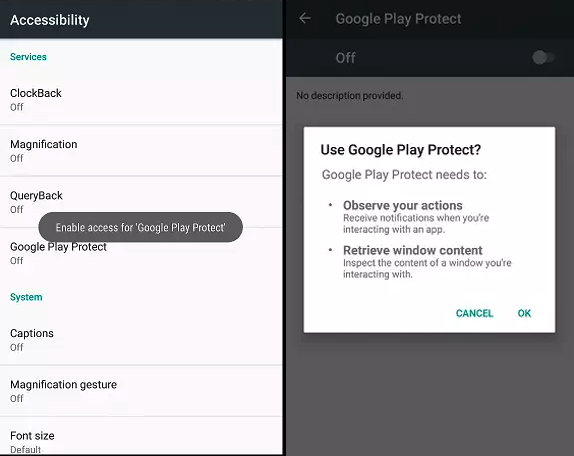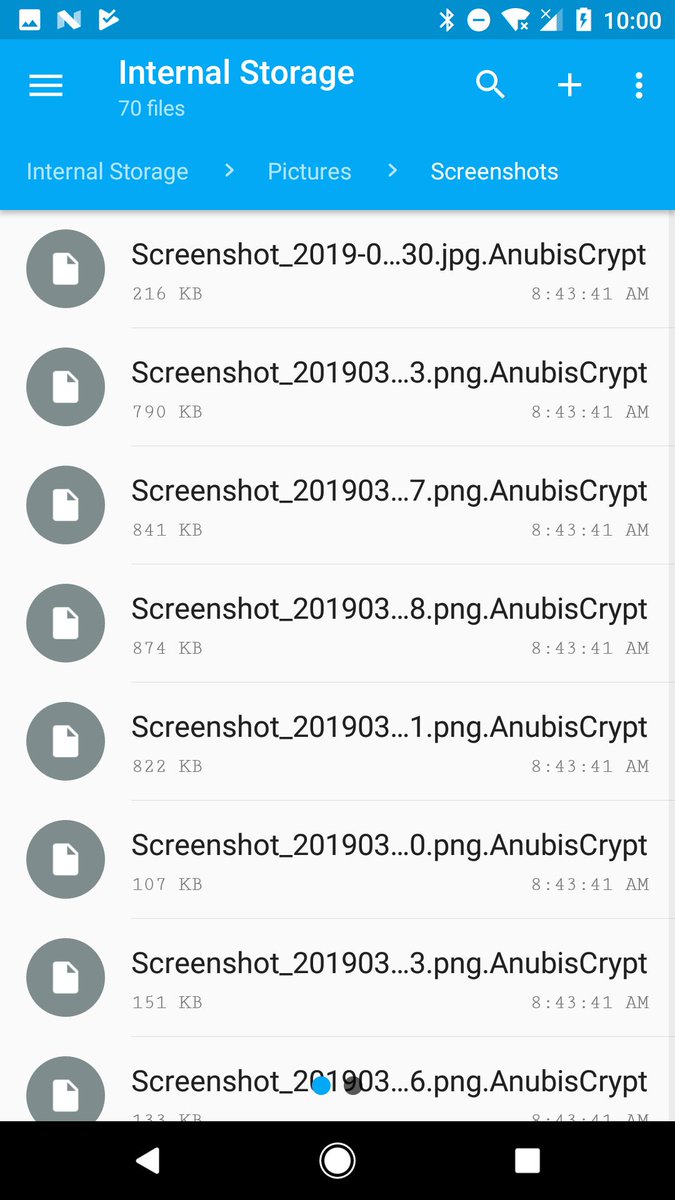Αν δεν ξέρετε πώς να κάνετε δωρεάν αναβάθμιση στα 10, ή γνωρίζετε κάποιον που χρειάζεται βοήθεια, δείτε αναλυτικά τη διαδικασία video
Posted by DASOS security info on Thursday, February 13, 2020
Thursday, February 13, 2020
Πώς να κάνετε δωρεάν αναβάθμιση στα win10!! video
Tuesday, February 11, 2020
Critical Android Bluetooth Flaw Exploitable without User Interaction
By
Ionut Ilascu February 6, 2020 07:44 PM 3

Android users are urged to apply the latest security patches released for the operating system on Monday that address a critical vulnerability in the Bluetooth subsystem.
An attacker could leverage the security flaw, now identified as CVE-2020-0022 without user participation to run arbitrary code on the device with the elevated privileges of the Bluetooth daemon when the wireless module is active.
Short-distance worm
Discovered and reported by Jan Ruge at the Technische Universität Darmstadt, Secure Mobile Networking Lab, the bug is considered critical on Android Oreo (8.0 and 8.1) and Pie (9) because exploiting it leads to code execution.
According to Ruge, attackers could use this security fault to spread malware from one vulnerable device to another, like a worm. However, the transmission is limited to the short distance covered by Bluetooth.
The Android security bulletin notes that CVE-2020-0022 "could enable a remote attacker using a specially crafted transmission to execute arbitrary code within the context of a privileged process."
The only prerequisite for taking advantage of the issue is knowing the Bluetooth MAC address. This is not difficult to find, though.
"For some devices, the Bluetooth MAC address can be deduced from the WiFi MAC address," says the researcher on the the blog site of German IT security consultant ERNW.
On Android 10, the severity rating drops to moderate since it all it does is crash the Bluetooth daemon, the researcher says. Android versions earlier than 8.0 may also be affected but the impact on them has not been assessed.
Technical details, PoC to be published
The severity of the issue is what keeps the researcher from disclosing technical details and proof of concept (PoC) code demonstrating the findings.
Despite a patch being available, OEM vendors and mobile carriers also have to push it to user terminals. For devices still under support, it can take weeks until the update rolls out.
If a patch does not become available, Ruge recommends enabling Bluetooth only "if strictly necessary." If you need to activate it, consider keeping the device non-discoverable, a feature that hides it from other gadgets looking for a pair.
Ruge says that a technical report will be available for this vulnerability "as soon as we are confident that patches have reached the end users."
Ionut Ilascu February 6, 2020 07:44 PM 3

Android users are urged to apply the latest security patches released for the operating system on Monday that address a critical vulnerability in the Bluetooth subsystem.
An attacker could leverage the security flaw, now identified as CVE-2020-0022 without user participation to run arbitrary code on the device with the elevated privileges of the Bluetooth daemon when the wireless module is active.
Short-distance worm
Discovered and reported by Jan Ruge at the Technische Universität Darmstadt, Secure Mobile Networking Lab, the bug is considered critical on Android Oreo (8.0 and 8.1) and Pie (9) because exploiting it leads to code execution.
According to Ruge, attackers could use this security fault to spread malware from one vulnerable device to another, like a worm. However, the transmission is limited to the short distance covered by Bluetooth.
The Android security bulletin notes that CVE-2020-0022 "could enable a remote attacker using a specially crafted transmission to execute arbitrary code within the context of a privileged process."
The only prerequisite for taking advantage of the issue is knowing the Bluetooth MAC address. This is not difficult to find, though.
"For some devices, the Bluetooth MAC address can be deduced from the WiFi MAC address," says the researcher on the the blog site of German IT security consultant ERNW.
On Android 10, the severity rating drops to moderate since it all it does is crash the Bluetooth daemon, the researcher says. Android versions earlier than 8.0 may also be affected but the impact on them has not been assessed.
Technical details, PoC to be published
The severity of the issue is what keeps the researcher from disclosing technical details and proof of concept (PoC) code demonstrating the findings.
Despite a patch being available, OEM vendors and mobile carriers also have to push it to user terminals. For devices still under support, it can take weeks until the update rolls out.
If a patch does not become available, Ruge recommends enabling Bluetooth only "if strictly necessary." If you need to activate it, consider keeping the device non-discoverable, a feature that hides it from other gadgets looking for a pair.
Ruge says that a technical report will be available for this vulnerability "as soon as we are confident that patches have reached the end users."
Νέο κύμα του Emotet Malware χακάρει δίκτυα Wi-Fi!
10 Φεβρουαρίου, 2020, 5:36 μμ by Teo Ehc Leave a Comment
Ένα νέο κύμα του malware Emotet με το νέο Wi-Fi Spreader εκμεταλλεύεται το interface wlanAPI για να απαριθμήσει όλα τα δίκτυα Wi-Fi στην περιοχή και να εξαπλωθεί η μόλυνση.
Το Emotet είναι ένα Trojan banking που εντοπίστηκε το 2014 και σχεδιάστηκε για να κλέβει ευαίσθητες και ιδιωτικές πληροφορίες.
Είναι ένα από τα πιο επικίνδυνα malware και είναι σε θέση να αποδώσει payloads βασισμένα σε συγκεκριμένα tasks.
Το Emotet διανέμεται κυρίως μέσω τεχνικών social engineering όπως τα emails με links για να κατέβει το malware.
Με τη νέα καμπάνια Emotet καταφθάνει ένα νέο Wi-Fi Spreader module που μεταφορτώνεται στο σύστημα C:\ProgramData. Το ληφθέν δυαδικό αρχείο περιέχει ένα RAR αυτόματης εξαγωγής που διαθέτει δυο δυαδικά αρχεία (service.exe και worm.exe) για τη διάδοση του μέσω Wi-Fi.

Το worm.exe είναι το εκτελέσιμο αρχείο που χρησιμοποιείται για την εξάπλωση του malware, αφού εκτελείται, αντιγράφει το service.exe σε μια μεταβλητή για τη χρήση του κατά τη διάδοση.
Στη συνέχεια καλεί την κλάση wlanAPI.dll που χρησιμοποιείται από το Native Wi-Fi για τη διαχείριση των προφίλ και των συνδέσεων ασύρματου δικτύου για τη διάδοση του malware σε άλλα δίκτυα.

“Το Worm απαριθμεί όλες τις συσκευές Wi-Fi που είναι επί του παρόντος ενεργοποιημένες στον τοπικό υπολογιστή, το οποίο επιστρέφει σε μια σειρά δομών. Αυτές οι δομές περιέχουν όλες τις πληροφορίες που σχετίζονται με τη συσκευή Wi-Fi, συμπεριλαμβανομένου του GUID και της περιγραφής της συσκευής”, διαβάζουμε στην ανάλυση του worm.
Συγκεντρώνει πιθανές πληροφορίες από όλα τα διαθέσιμα δίκτυα Wi-Fi που υπάρχουν στη λίστα των δικτύων.

Σπάζοντας το αδύναμο δίκτυο Wi-Fi
Μόλις συνδεθεί με το δίκτυο Wi-Fi, απαριθμεί τους χρήστες και επιχειρεί brute-force για όλους τους χρήστες του δικτύου.
Στη συνέχεια, το Service.exe είναι το payload που έχει εγκατασταθεί από το worm.exe στο μηχάνημα, μόλις εγκατασταθεί επικοινωνεί με το server C2 και εκτελεί το δυαδικό ενσωματωμένο στο service.exe.
Προηγουμένως, το Emotet, ο οποίος γνωρίζει ότι διανέμεται μόνο μέσω δικτύων malspam και μολυσμένων δικτύων, με αυτόν τον νέο loader εξαπλώνεται μέσω κοντινών ασύρματων δικτύων που χρησιμοποιούν αδύναμους κωδικούς πρόσβασης.
Phishing Attack Disables Google Play Protect, Drops Anubis Trojan
By
Sergiu Gatl an February 6, 2020 02:36 PM 1

Android users are targeted in a phishing campaign that will infect their devices with the Anubis banking Trojan that can steal financial information from more than 250 banking and shopping applications.
The campaign uses a devious method to get the potential victims to install the malware on their devices: it asks them to enable Google Play Protect while actually disabling it after being granted permissions on the device.
To deliver the malware, the attackers use a malicious link embedded within the phishing email that will download an APK file camouflaged as an invoice as Cofense found.
After being asked if he wants to use Google Play Protect and installing the downloaded APK, the victim's device will be infected with the Anubis Trojan.
 Google Play Protect used as cover (Cofense)
Google Play Protect used as cover (Cofense)Targets over 250 financial applications
Cofense discovered that, once the Android smartphone or tablet is compromised, Anubis will start harvesting "a list of installed applications to compare the results against a list of targeted applications.
The malware mainly targets banking and financial applications, but also looks for popular shopping apps such as eBay or Amazon.
Once an application has been identified, Anubis overlays the original application with a fake login page to capture the user’s credentials."
After analyzing the malware's source code, Cofense found that the banking Trojan has a wide range of capabilities included but not limited to:
• capturing screenshots
• toggling off and altering administration settings
• disabling Google's Play Protect built-in malware protection for Android
• recording audio
• making calls and sending SMS
• stealing the contact list
• stealing the contacts from the addressbook
• receiving commands from its operators via Telegram and Twitter
• controlling the device over a VNC
• opening URLs
• locking device screen
• and collecting device and location information
The malware also comes with a keylogger module that can capture keystrokes from every app installed on the compromised Android device.
However, this keylogging module has to be specifically enabled by the attackers via a command sent through Anubis' command and control (C2) server.
Also comes with a ransomware module
On top of all of these, Anubis is also capable of encrypting files on the internal storage and from external drives using the RC4 stream cipher with the help of a dedicated ransomware module, adding the .AnubisCrypt extension to the encrypted files and sending it to the C2 server.
Anubis Trojan samples with ransomware capabilities are not new, as Sophos previously discovered Anubis-infected apps in the Play Store in August 2018 that also added the .AnubisCrypt file extension to the encrypted files.
"Remember, this runs on a phone, which is even less likely to be backed up than a laptop or desktop, and more likely to have personal photos or other valuable data," Sophos said at the time.
 AnubisCrypt encrypted files
AnubisCrypt encrypted filesAccording to the Cofense report, "this version of Anubis is built to run on several iterations of the Android operating system, dating back to version 4.0.3, which was released in 2012."
Trend Micro's researchers also found in January 2019 that the Anubis Trojan was used in a campaign that targeted 377 bank apps from 93 countries all over the globe, with banks like Santander, Citibank, RBS, and Natwest, as well as shopping apps such as Amazon, eBay, and PayPal being listed as targets.
An extensive list of indicators of compromised (IOCs) including hashes of the malicious APK installer used in the campaign, associated URLs, and all application IDs for the apps targeted by this Anubis sample is available at the end of Cofense's report.
Subscribe to:
Comments (Atom)